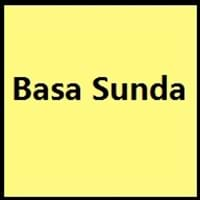Uzbek and Sundanese
Countries
Turkey, Uzbekistan
West Java
National Language
Afganistan, China, Kazakhstan, Kyrgyzstan, Russia, Tajikistan, Turkmenistan, Uzbekistan
Indonesia
Second Language
Not spoken in any of the countries
Not spoken in any of the countries
Speaking Continents
Middle East
Asia
Minority Language
Not spoken in any of the countries
Not spoken in any of the countries
Regulated By
Not Available
Not Available
Interesting Facts
- Uzbek is officially written in the Latin script, but many people still use Cyrillic script.
- In Uzbek language, there are many loanwords from Russian, Arabic and Persian.
- The Sundanese language is second most widely spoken regional language in Indonesia.
Similar To
Kazakh and Uyghur Languages
Madurese and Malay Languages
Derived From
Not Available
Not Available
Alphabets in
Uzbek-Alphabets.jpg#200
Sundanese-Alphabets.jpg#200
Scripts
Arabic, Cyrillic, Latin
Latin, Sundanese
Writing Direction
Not Available
Left-To-Right, Horizontal
Language Levels
Not Available
Time Taken to Learn
Not Available
How Are You?
Qalay siz?
Kumaha kabarna?
Good Night
Hayirli tun
Wilujeng kulem
Good Evening
Hayirli kech
Wilujeng wengi
Good Afternoon
Hayirli kun
Wilujeng siang
Good Morning
Hayirli tong
Wilujeng énjing
Sorry
Kechiring!
Hapunten
I Love You
Sizni sevaman
Abdi bogoh ka anjeun
Excuse Me
Iltimos! Menga qarang
Punten
Dialect 1
Tashkent
Western dialect
Where They Speak
Not Available
Banten
Dialect 2
Afghan
Northern dialect
Where They Speak
Not Available
Bogor
Dialect 3
Ferghana
Priangan dialect
Where They Speak
Not Available
Bandung
Native Name
أۇزبېك ﺗﻴﻠی o'zbek tili ўзбек тили (o‘zbek tili)
Not Available
Alternative Names
Annamese, Ching, Gin, Jing, Kinh, Viet
Priangan, Sunda
French Name
ouszbek
soundanais
German Name
Usbekisch
Sundanesisch
Pronunciation
Not Available
Not Available
Ethnicity
Uzbek
Sundanese, Bantenese, Cirebonese, Badui
Origin
9th–12th centuries AD
5th century AD
Language Family
Turkic Family
Austronesian Family
Subgroup
Turkic
Indonesian
Branch
Southestern(Chagatai)
Not Available
Early Forms
Chagatay
No early forms
Standard Forms
Uzbek
Sundanese
Language Position
Not Available
Signed Forms
Not Available
Not Available
Scope
Macrolanguage
Individual
ISO 639 6
Not Available
Not Available
Glottocode
uzbe1247
sund1251
Linguasphere
No data available
No data available
Language Type
Living
Living
Language Linguistic Typology
Not Available
Subject-Verb-Object
Language Morphological Typology
Not Available
Not Available
All Uzbek and Sundanese Dialects
Most languages have dialects where each dialect differ from other dialect with respect to grammar and vocabulary. Here you will get to know all Uzbek and Sundanese dialects. Various dialects of Uzbek and Sundanese language differ in their pronunciations and words. Dialects of Uzbek are spoken in different Uzbek Speaking Countries whereas Sundanese Dialects are spoken in different Sundanese speaking countries. Also the number of people speaking Uzbek vs Sundanese Dialects varies from few thousands to many millions. Some of the Uzbek dialects include: Tashkent, Afghan. Sundanese dialects include: Western dialect , Northern dialect. Also learn about dialects in South American Languages and North American Languages.
Uzbek and Sundanese Speaking population
Uzbek and Sundanese speaking population is one of the factors based on which Uzbek and Sundanese languages can be compared. The total count of Uzbek and Sundanese Speaking population in percentage is also given. The percentage of people speaking Uzbek language is 0.39 % whereas the percentage of people speaking Sundanese language is 0.57 %. When we compare the speaking population of any two languages we get to know which of two languages is more popular. Find more details about how many people speak Uzbek and Sundanese on Uzbek vs Sundanese where you will get native speakers, speaking population in percentage and native names.
Uzbek and Sundanese Language Codes
Uzbek and Sundanese language codes are used in those applications where using language names are tedious. Uzbek and Sundanese Language Codes include all the international language codes, glottocodes and linguasphere.





